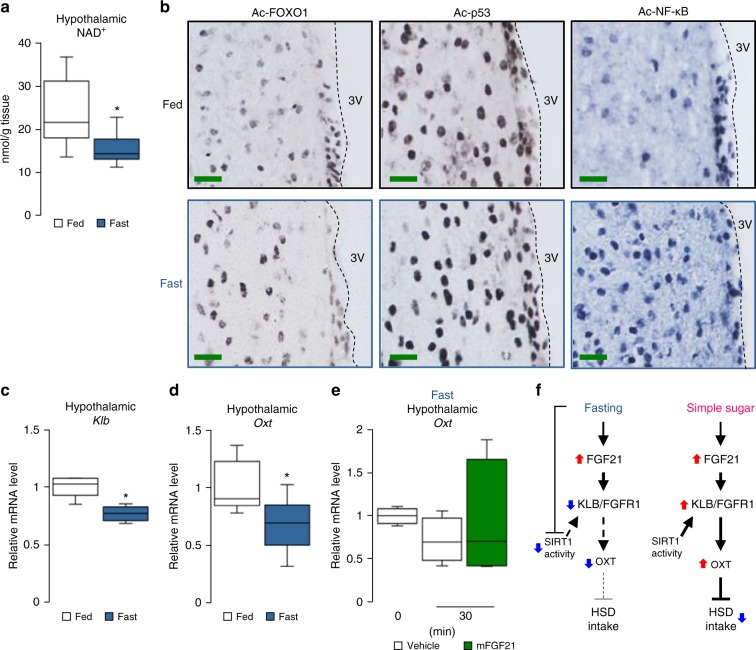Fig. 9.
Fasting attenuates hypothalamic SIRT1 activity and hypothalamic FGF21-Oxt signalling. a The effects of feeding and fasting on hypothalamic NAD+ levels (n = 12 in the Fed group, n = 13 in the Fasted group). b Photomicrographs depict hypothalamus coronal section from wild-type C57BL/6 mice (fed or fasted state) that received 3rd ICV injection of 0.5 μl of TSA (10 μg/μl). The length of scale bars is 100 μm. The sections were immunostained to identify Ac-FOXO1, Ac-p53 and Ac-NF-κB protein (black or blue) expression. c, d The effects of feeding and fasting on hypothalamic expression levels of Klb (c) (n = 6 in the Fed group, n = 7 in the Fasted group) and Oxt (d) (n = 6 in the Fed group, n = 7 in the Fasted group) in C57BL6/J mice fed ad libitum or fasted for 24 h. e Hypothalamic Oxt mRNA expression levels after IP injection of mFGF21 (1 mg/kg) or water (vehicle) in 24-h–fasted C57BL6/J mice (n = 4 per group). f Schematic diagrams of hypothalamic FGF21–Oxt signalling and SIRT1 in fasting and feeding. (Left) Fasting increased circulating FGF21 levels but suppressed hypothalamic SIRT1 activity, which was associated with the down-regulation of FGF21–KLB–OXT signalling. (Right) During simple sugar feeding, hypothalamic SIRT1 activity was maintained, and FGF21 functioned as a metabolic signal for regulating the simple sugar preference through the FGF21–OXT signalling. Data are shown as box and whisker plots (centre line, median; box limits, upper and lower quartiles; whiskers, the minimum and maximum value of a data set). *p < 0.05. 3V, 3rd ventricle; Ac. acetylated. See also Supplementary Fig. 8

